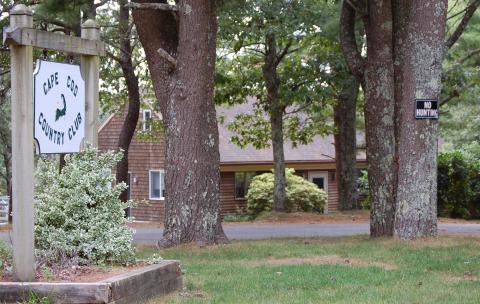
I am spending the week on Cape Cod, MA, visiting golf courses, resorts and communities. I am convinced that, in the coming years, more and more golfing couples will decide to live in two homes, north and south, to be able to play in balmy weather year round. In coming months, you will see more and more reviews and articles in this space about New England golf communities, private golf courses and golf resorts that double as residential developments.
I was somewhat unprepared for the density of courses on the Cape. They are every few miles and range from the strictly private to the municipal, although these are not typical muni goat tracks.
At the top end are those very private clubs, like Oyster Harbors, which I reviewed yesterday (see below), and Cape Cod National, which I visited briefly today. Both are pure golf clubs, with only a few incidental homes scattered at their peripheries. Cape Cod National's membership fees range from $40,000 (non-refundable) to $190,000 (fully refundable). It must be good, and it looked it.
I drove through the Ocean Edge Resort today. The fairways were extremely lush and well populated by residents and a few resort guests trying to catch that last flush of summer (it was about 72 degrees). I stopped as well at the Wequassett Resort in East Harwich. Guests who pay the price to be pampered by the resort's enthusiastic and professional staff will be doubly pampered if they play golf; Wequassett reserves a few tee times at the aforementioned private Cape Cod National.
Cranberry Valley in Harwich has long been recognized as one of the premier daily fee courses in the country, but it has plenty of competition on the Cape. Ballymeade, Bass River, Falmouth Country Club, Cranberry Valley and many others could keep even the most finicky traveling golfer happy for a week and more.
During the golf boom that began a few decades ago, some towns on the Cape got into the golf business. The town of Dennis owns Dennis Pines and Dennis Highlands, which are separated by a few miles. Ditto the two outstanding Captains Courses in Brewster, where a local commission overseas the club (and prints minutes of their meetings on the Internet). Cape Codders, as independent a breed as there is, do not seem to mind a little government interference, as long as it means reasonable green fees. Residents of Dennis, for example, can play their courses for just $617 per year.
Page 562 of 1030